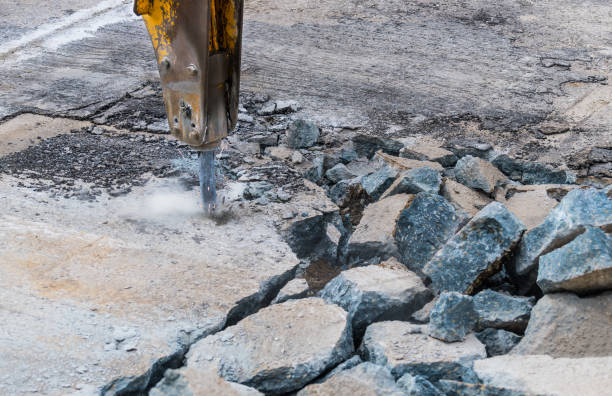Concrete forms the backbone of our urban infrastructure. However, the aging of these structures or the necessity for new development means that the concrete removal process becomes an indispensable part of construction and renovation projects. This in-depth guide will emphasize the importance of concrete removal, the methods involved, and the critical considerations for ensuring safety during the process.
The Need for Concrete Removal
Aging Infrastructure
It’s important to remember that nothing lasts forever, not even concrete. Over time, concrete structures can become damaged due to weathering, erosion, and constant use. Once these structures reach a particular stage of deterioration, they can pose a risk to safety and efficiency. As such, they must be replaced with new, more vital structures.
Development and Expansion
In addition to aging infrastructure, the need for concrete removal often arises from expanding urban spaces and developing new construction projects. Old buildings, roadways, and other concrete structures may need demolishment and disposal to make way for new ones.
Methods of Concrete Removal
There are several methods for concrete removal, each with its own set of considerations and requirements. The choice of method depends mainly on the size and location of the concrete structure, as well as the project’s budget and timeline.
Manual Removal
Manual removal may be the most cost-effective method for smaller projects, such as removing a concrete sidewalk or patio. This involves using sledgehammers, pickaxes, and pry bars to break the concrete into manageable pieces.
Mechanical Removal
Mechanical removal using heavy machinery like bulldozers, excavators, and hydraulic crushers may be necessary for larger projects. These machines can break up and remove large quantities of concrete quickly and efficiently. However, they also require skilled operators and strict safety protocols to ensure safe operation.
Chemical Removal
In some cases, chemical methods may weaken the concrete before removal. These methods use chemical compounds to expand within the concrete, causing it to crack and break apart. While this method is less labour-intensive, it requires careful chemical handling.
Safety Considerations in Concrete Removal
Concrete removal is a task that involves several potential hazards. From flying debris to heavy machinery operation, it is crucial to consider various safety considerations to protect the workers and the surrounding property.
Personal Protective Equipment
Personal protective equipment (PPE) is essential for concrete removal. This includes hard hats to protect from falling debris, safety goggles to shield the eyes, ear protection against loud noises, and steel-toed boots to protect the feet.
Proper Training
For mechanical removal, proper training in using and operating heavy machinery is necessary. Operators must be thoroughly familiar with the machinery, including its capabilities, limitations, and safety features.
Securing the Area
Before starting the concrete removal process, the area should be secured to protect bystanders and property. This may involve setting up barriers, marking the area with caution tape, and posting warning signs.
The Environmental Impact of Concrete Removal
Awareness of the environmental impact associated with concrete removal is essential. The process can produce large quantities of dust and debris that can harm people and the environment if improperly managed.
Dust Control
Dust produced during concrete removal can cause respiratory problems and harm the environment. Methods such as water suppression or dust extraction equipment can be used to control dust.
Waste Management
Proper waste management is vital to reduce the environmental impact of concrete removal. Debris should be appropriately disposed of or, if possible, recycled. Fortunately, concrete is highly recyclable, and crushed concrete can be reused in many ways, such as in new construction projects or as a base for roads and driveways.
Click here – 5 Social Media Marketing Strategies to Improve Your Business Reach
Conclusion
The significance of concrete removal must be recognized regarding our built environment’s maintenance, improvement, and progression. This operation sits at the heart of our urban evolution, facilitating everything from small-scale domestic improvements to city-wide redevelopment projects. You can check this link to learn more about.
Understanding the various concrete removal methods — manual, mechanical, and chemical — allows for selecting the most appropriate and efficient strategy for any situation. Each method has its unique set of advantages, constraints, and suitability for different scales and types of projects.
Such understanding enhances the efficiency and effectiveness of the process, enabling us to handle projects of varying complexities with a straightforward, strategic approach.
Safety, of course, remains paramount in the realm of concrete removal. Acknowledging the inherent risks involved in this labour-intensive operation, it’s essential to prioritize and enforce stringent safety measures.
The correct use of Personal Protective Equipment (PPE), comprehensive operator training, and diligent area-securing practices are integral to a robust safety protocol. These measures protect those directly involved in the removal process and ensure the general public and surrounding properties remain unharmed.

